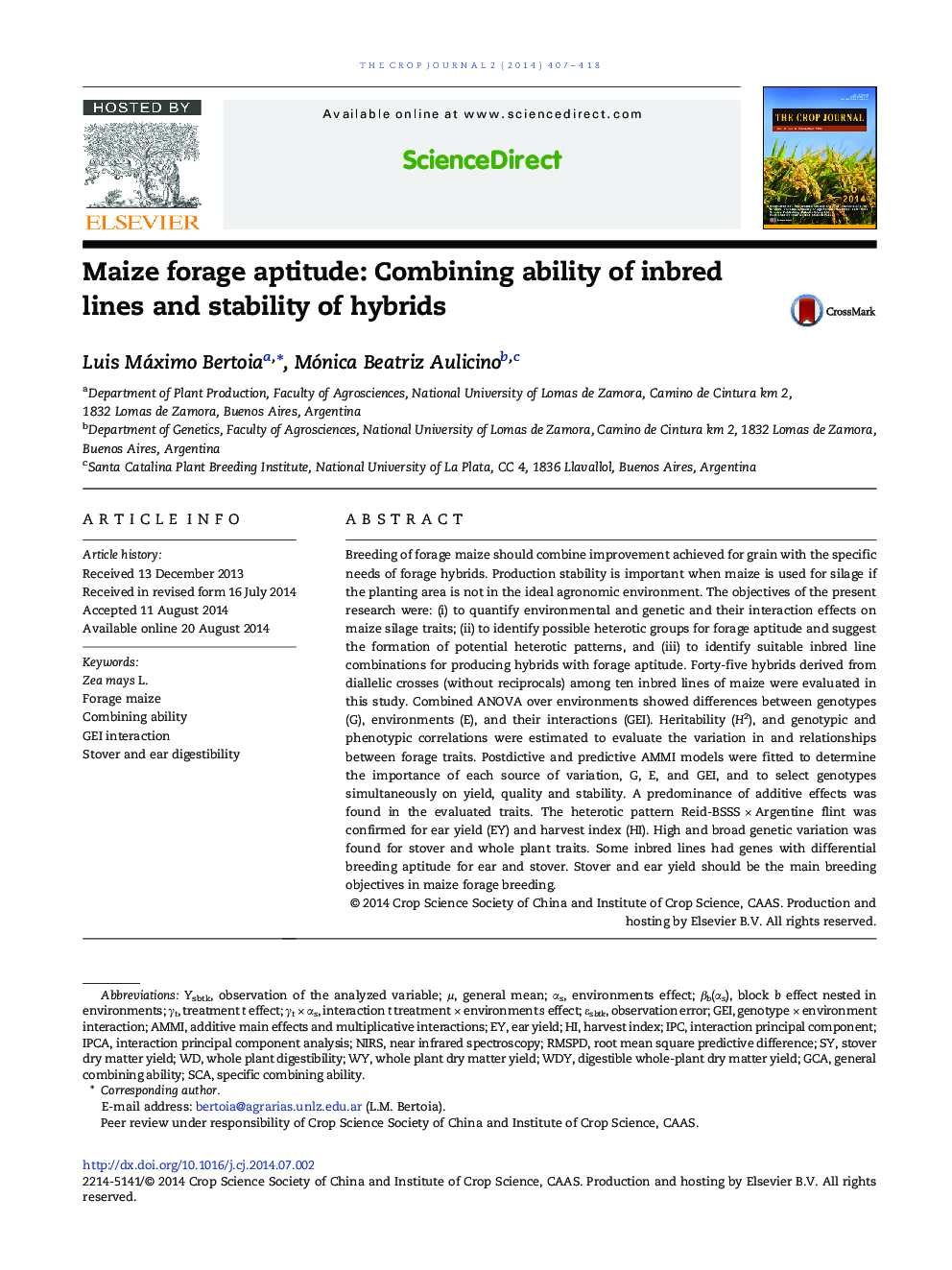| Article ID | Journal | Published Year | Pages | File Type |
|---|---|---|---|---|
| 2079476 | The Crop Journal | 2014 | 12 Pages |
Breeding of forage maize should combine improvement achieved for grain with the specific needs of forage hybrids. Production stability is important when maize is used for silage if the planting area is not in the ideal agronomic environment. The objectives of the present research were: (i) to quantify environmental and genetic and their interaction effects on maize silage traits; (ii) to identify possible heterotic groups for forage aptitude and suggest the formation of potential heterotic patterns, and (iii) to identify suitable inbred line combinations for producing hybrids with forage aptitude. Forty-five hybrids derived from diallelic crosses (without reciprocals) among ten inbred lines of maize were evaluated in this study. Combined ANOVA over environments showed differences between genotypes (G), environments (E), and their interactions (GEI). Heritability (H2), and genotypic and phenotypic correlations were estimated to evaluate the variation in and relationships between forage traits. Postdictive and predictive AMMI models were fitted to determine the importance of each source of variation, G, E, and GEI, and to select genotypes simultaneously on yield, quality and stability. A predominance of additive effects was found in the evaluated traits. The heterotic pattern Reid-BSSS × Argentine flint was confirmed for ear yield (EY) and harvest index (HI). High and broad genetic variation was found for stover and whole plant traits. Some inbred lines had genes with differential breeding aptitude for ear and stover. Stover and ear yield should be the main breeding objectives in maize forage breeding.
